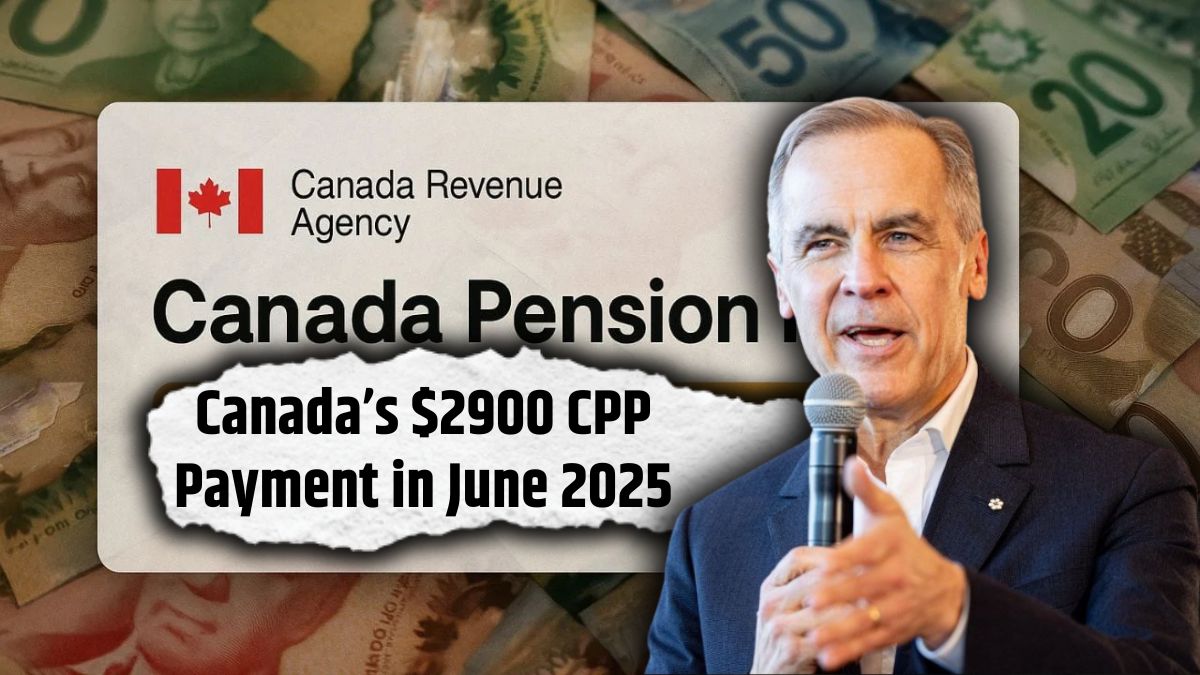As June 2025 begins, headlines across Canada are stirring curiosity over a \$2,900 Canada Pension Plan (CPP) payment. While this figure may sound like a one-time bonus, it’s actually part of a long-term CPP enhancement strategy designed to increase retirement income over time. This guide breaks down exactly what the number means, who qualifies, and how it affects monthly CPP payments for Canadians approaching or already in retirement.
What the \$2,900 CPP Figure Really Represents
The \$2,900 figure is not a lump-sum deposit, nor is it a new government stimulus. It reflects the maximum potential annual increase that eligible Canadians may see in their CPP payments due to enhanced contributions. If you’ve made maximum contributions for nearly four decades, this boost could add up to approximately \$241 per month to your existing CPP benefits.
The actual increase will be included in the regular CPP payment for June 2025, which is scheduled for June 27, 2025.
What Is the Canada Pension Plan (CPP)?
The Canada Pension Plan is a public retirement benefit program funded by contributions from both employers and employees. If you’re self-employed, you contribute both shares. The amount you receive monthly during retirement is based on:
- How much you earned while working
- How long you contributed to the plan
- The age at which you start receiving payments
You can begin CPP as early as age 60, but delaying to age 65 or 70 significantly increases your monthly benefit.
Who Qualifies for the Full \$2,900 Increase?
To qualify for the full annual increase of \$2,900, recipients must meet strict criteria:
- Be at least 60 years old and have applied for CPP
- Have made maximum yearly CPP contributions for approximately 39 years
- Consistently earned income that meets or exceeds the Year’s Maximum Pensionable Earnings (YMPE)
Only a small percentage of Canadians meet all these conditions. However, even if you don’t qualify for the full increase, you may still see modest gains in your monthly benefit due to partial enhancements.
How CPP Enhancements Work
The increase is part of the CPP enhancement program launched in 2019, which includes two major changes:
- Higher Contribution Rates
- Employees contribute 5.95% of eligible earnings
- Self-employed workers pay 11.9%, covering both shares
- Increased Retirement Benefits
- These higher contributions lead to a gradual rise in monthly retirement payments over time
For 2025, the maximum CPP payment at age 65 is \$1,306.57/month, while the average recipient receives around \$1,000/month.
June 2025 Payment Breakdown
Here’s what qualified CPP recipients can expect in June 2025:
- Maximum Monthly Payment: \$1,306.57
- Average Monthly Payment: ~\$1,000
- Annual Maximum Increase: \$2,900 = ~\$241/month
Remember, the actual amount you receive will depend on your contribution history, retirement age, and whether you meet the enhancement criteria.
Other Key Federal Retirement Benefits
CPP is just one part of a broader retirement support system in Canada. Many seniors also receive:
- Old Age Security (OAS)
- About \$800/month for seniors over 75
- Slightly less for those between 65 and 74
- Guaranteed Income Supplement (GIS)
- Available to low-income seniors
- Can add over \$1,000/month, tax-free
Combined, these programs provide meaningful monthly income for Canadians in retirement, especially for those with limited savings or no employer pension.
How to Maximize Your CPP Income
To get the most out of your CPP benefits, consider the following strategies:
- Start contributing early: The longer you contribute, the higher your lifetime benefit
- Maximize your earnings: Aim to meet the YMPE annually to ensure top contributions
- Delay receiving CPP: Each year past age 65 increases your monthly benefit by 8.4%, up to age 70
- Use supplemental savings: RRSPs and TFSAs offer tax-advantaged retirement income sources
Even if you don’t qualify for the \$2,900 increase, smart planning can help you boost your monthly payments and secure a more stable retirement.
Planning Ahead for Retirement Success
Whether you’re approaching retirement or already collecting CPP, it’s crucial to understand how contributions and timing affect your income. The enhancement program continues to expand annually, meaning future retirees could receive even higher payments if they maintain consistent, high-level contributions throughout their careers.
For now, those receiving CPP in June 2025 should monitor their Service Canada account and ensure their personal information and banking details are current to avoid delays in receiving benefits.
Disclaimer:
This article is for informational purposes only and should not be taken as financial or legal advice. CPP amounts, contribution limits, and eligibility rules are subject to change. For official guidance, consult Service Canada or a certified financial advisor.






